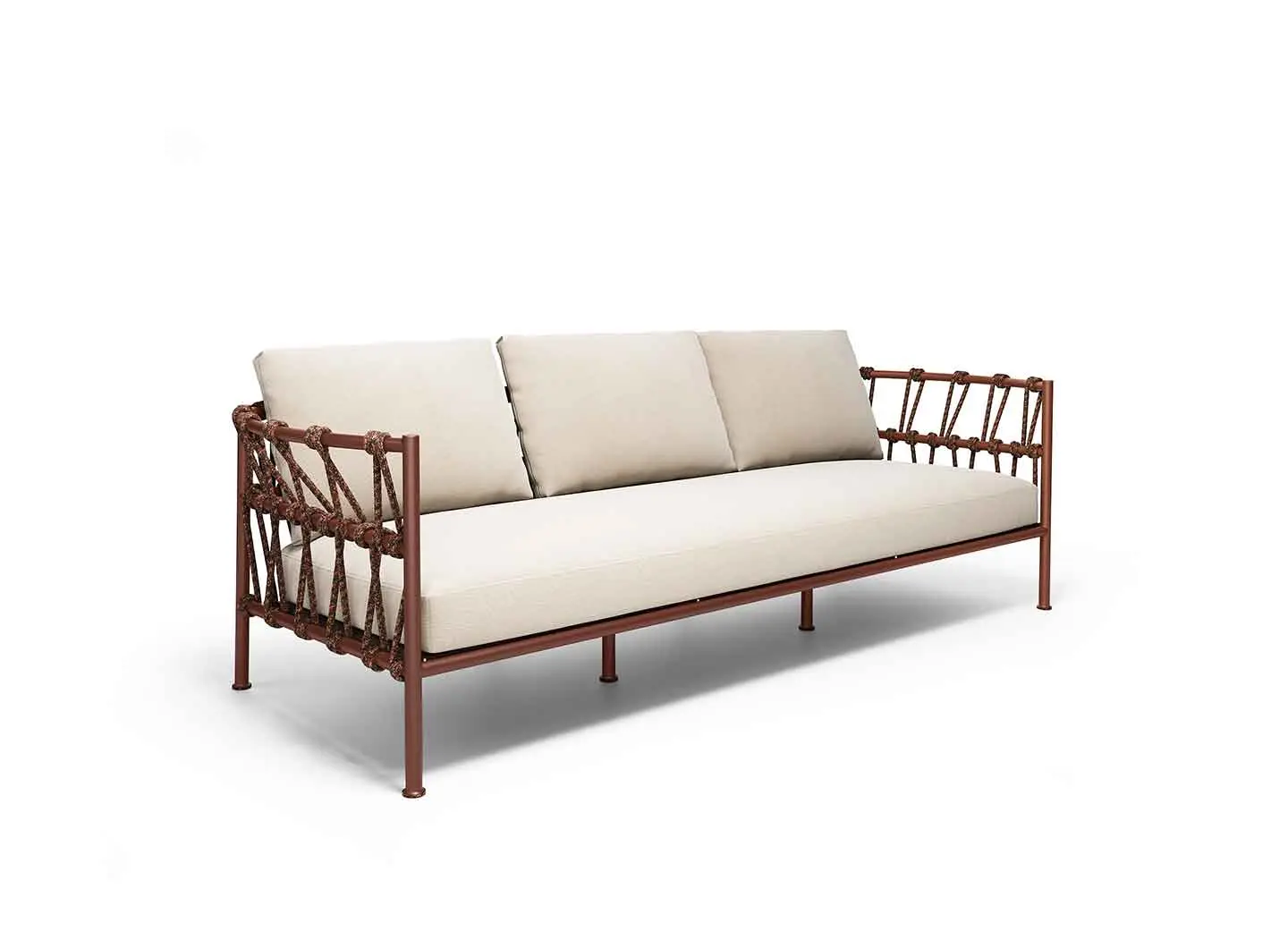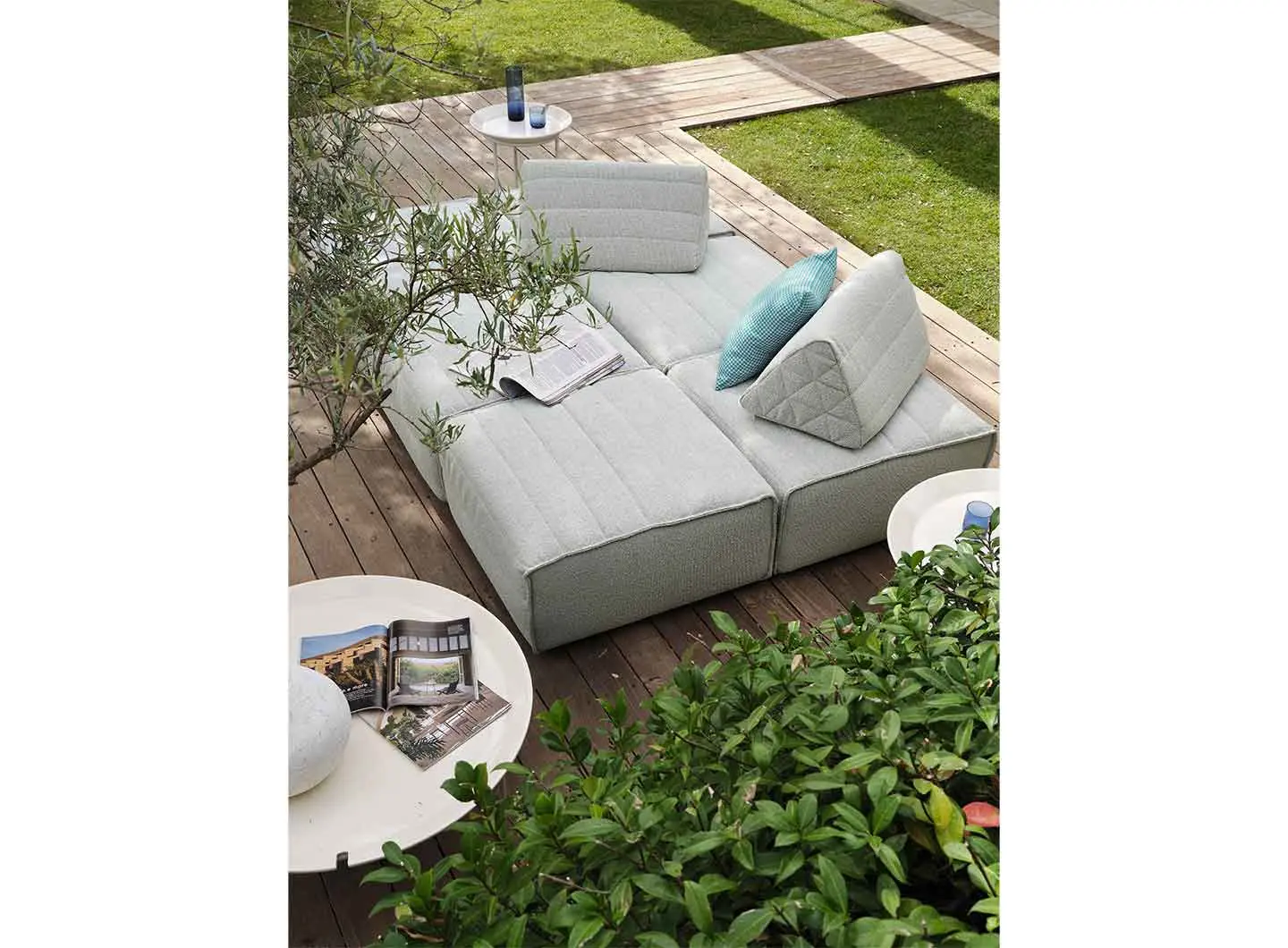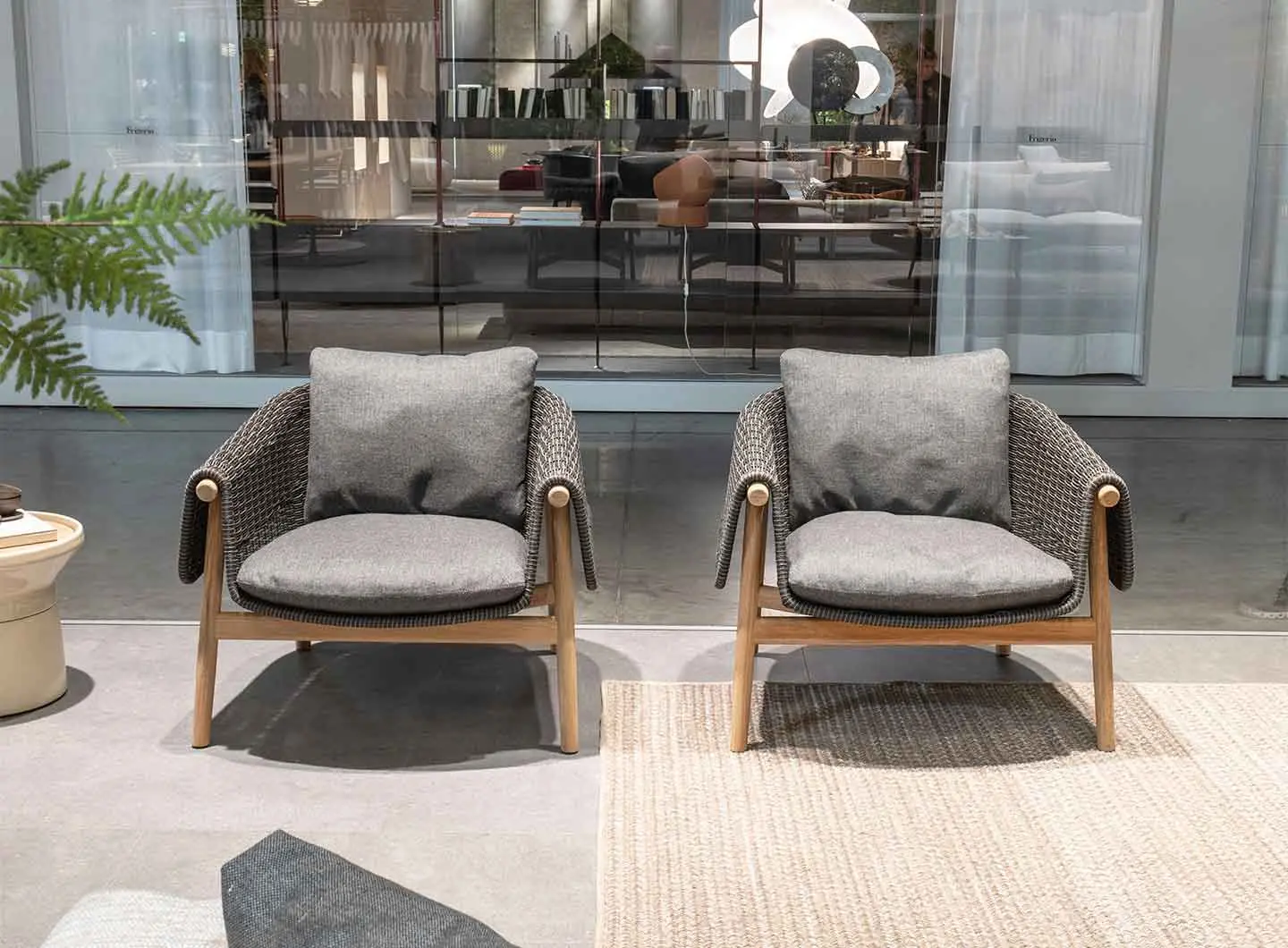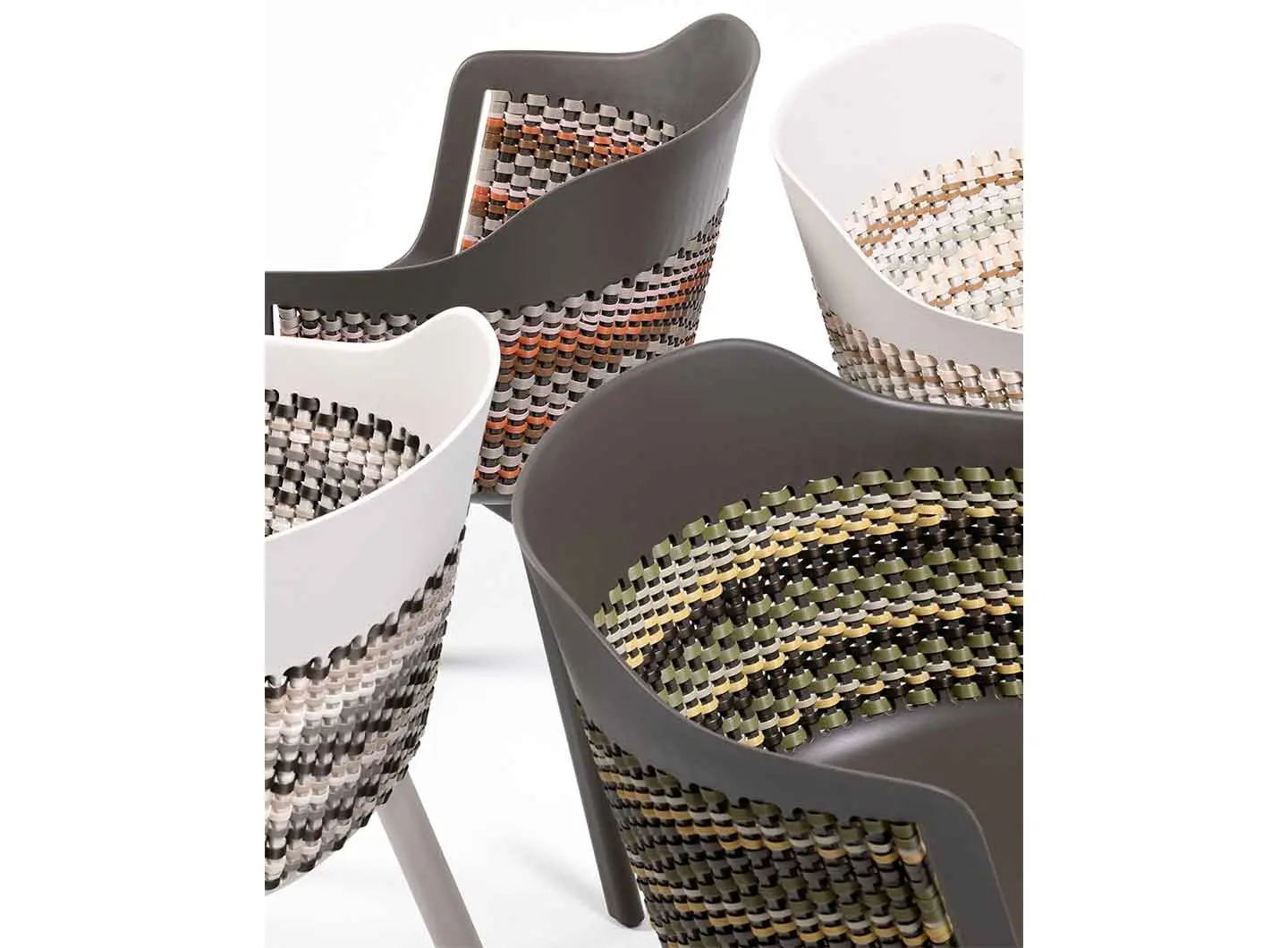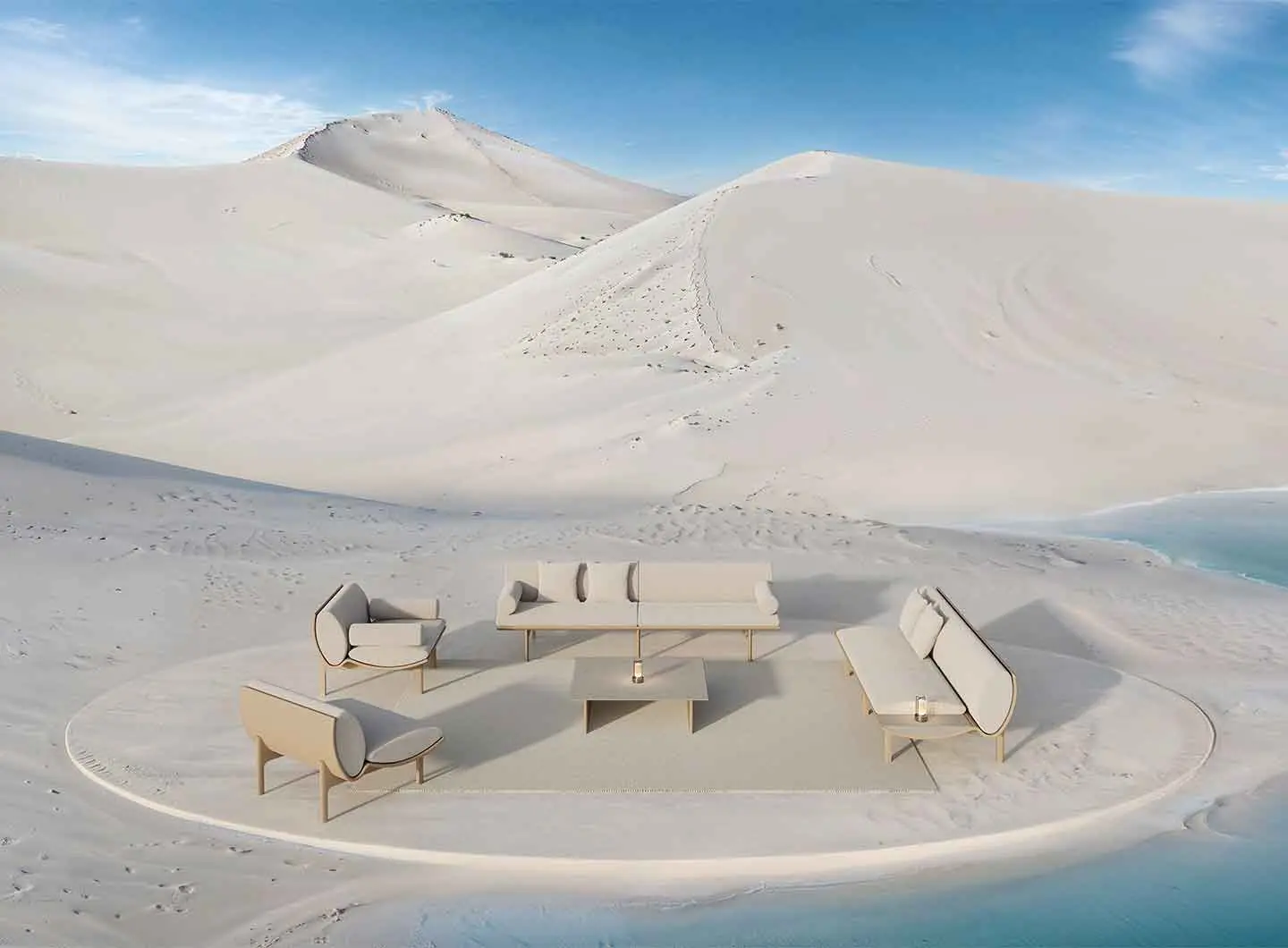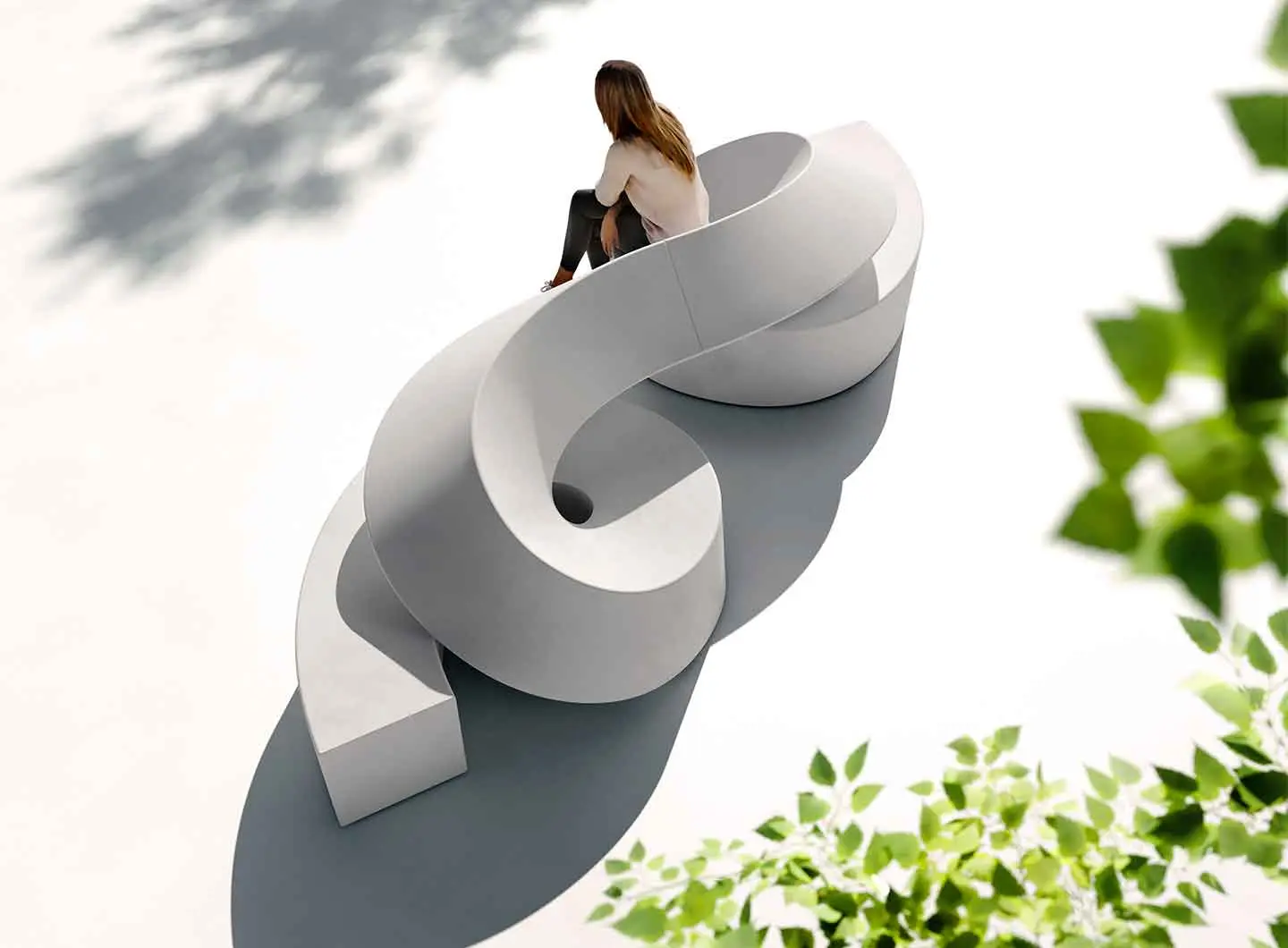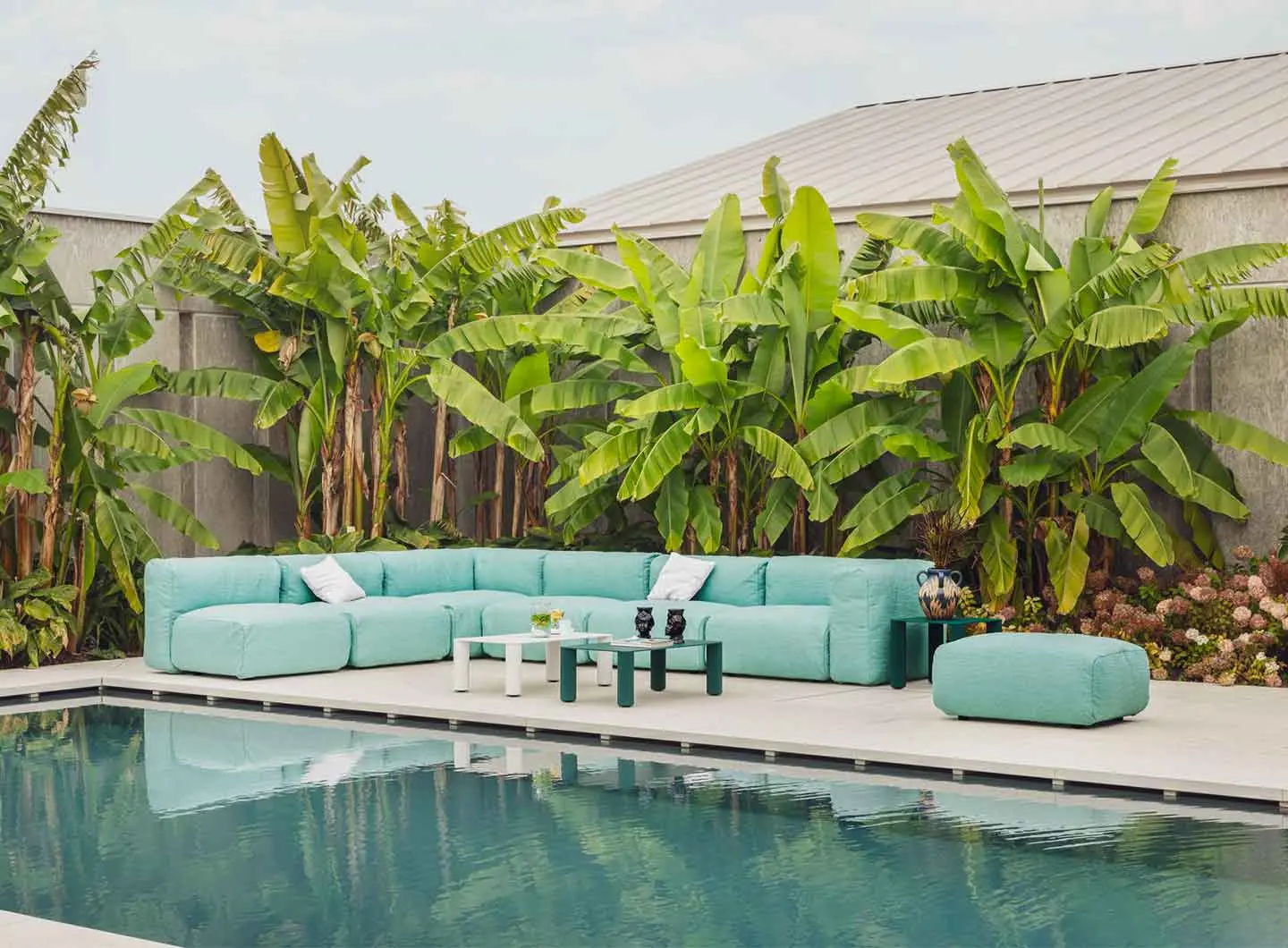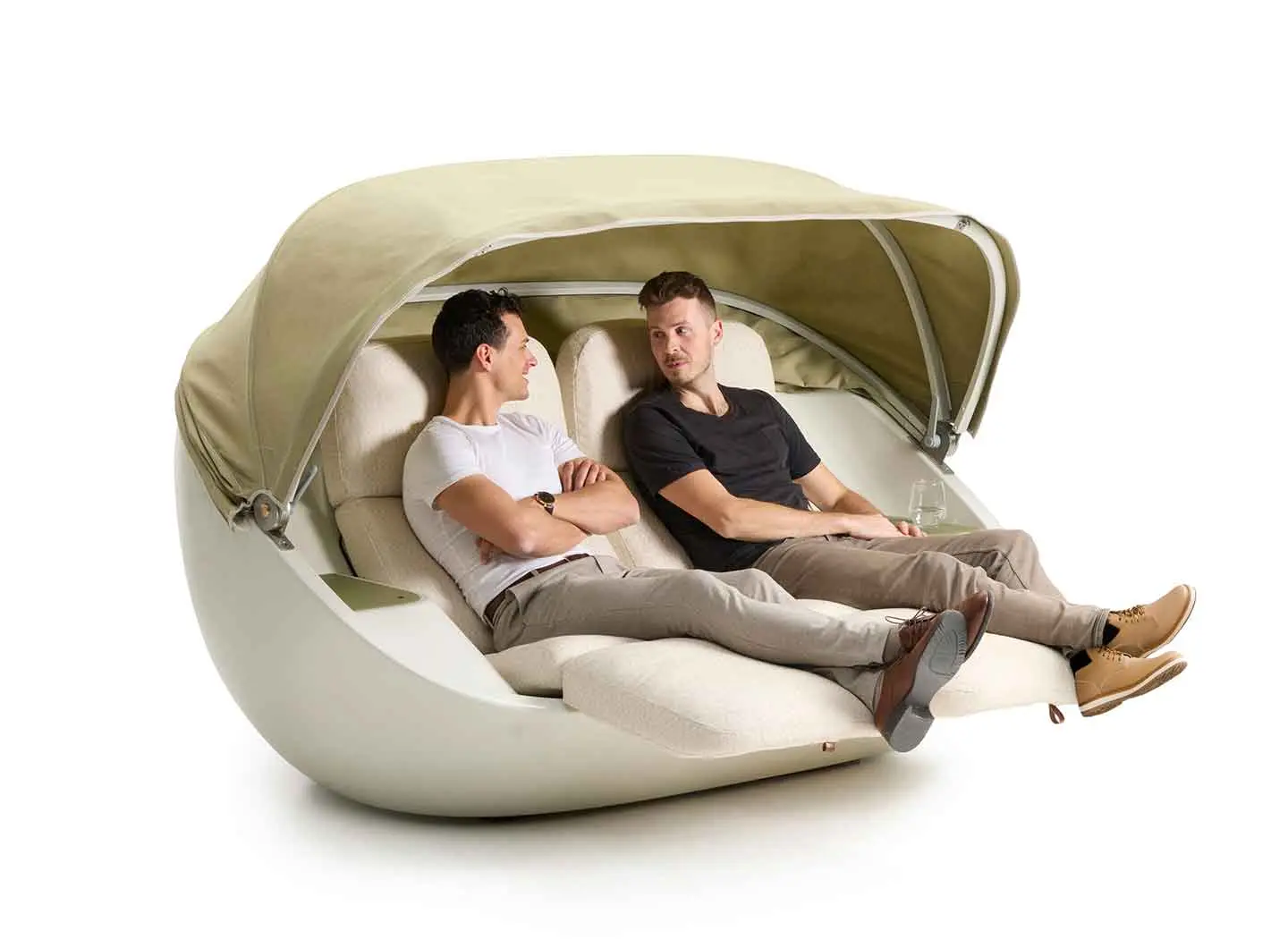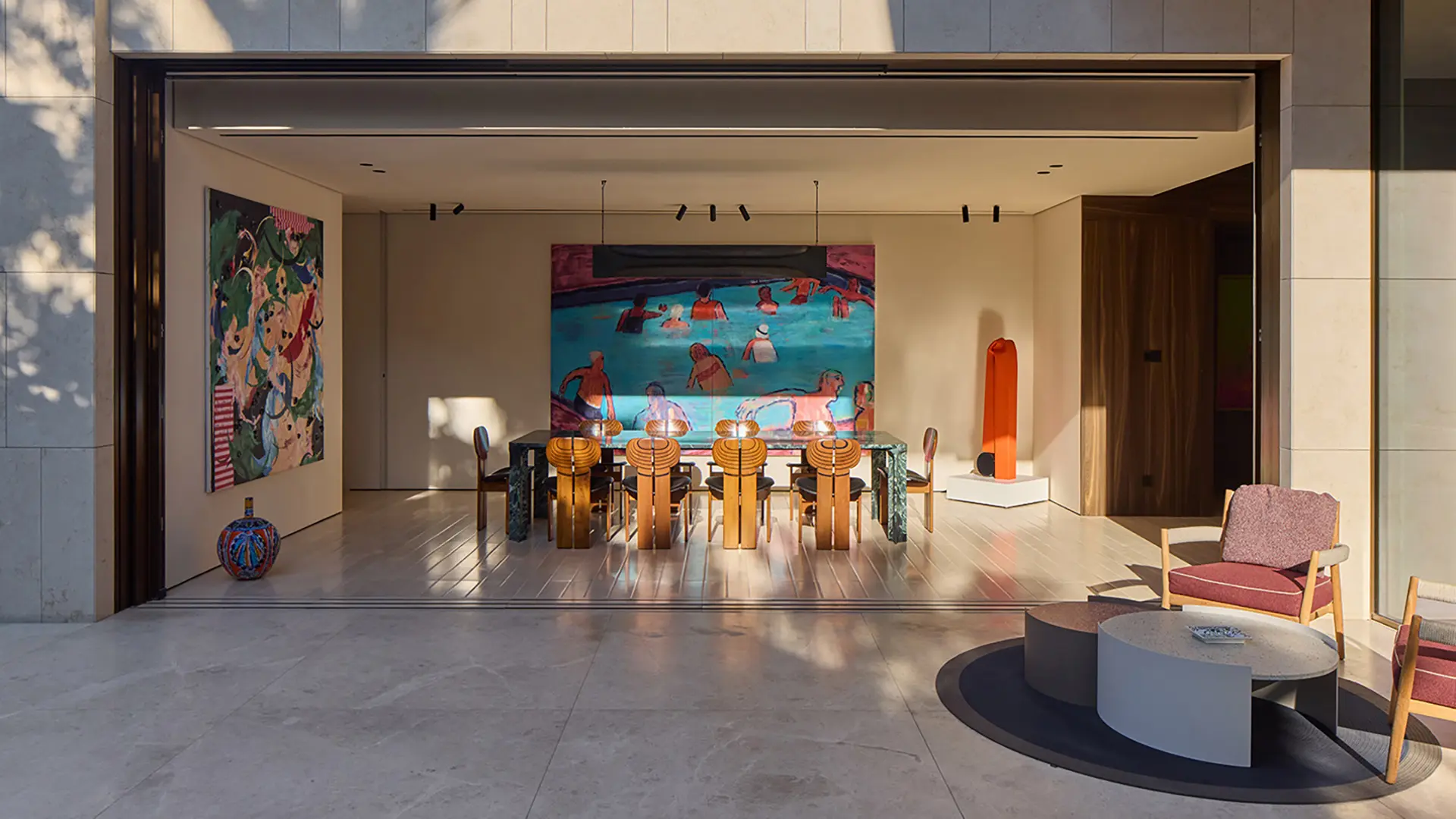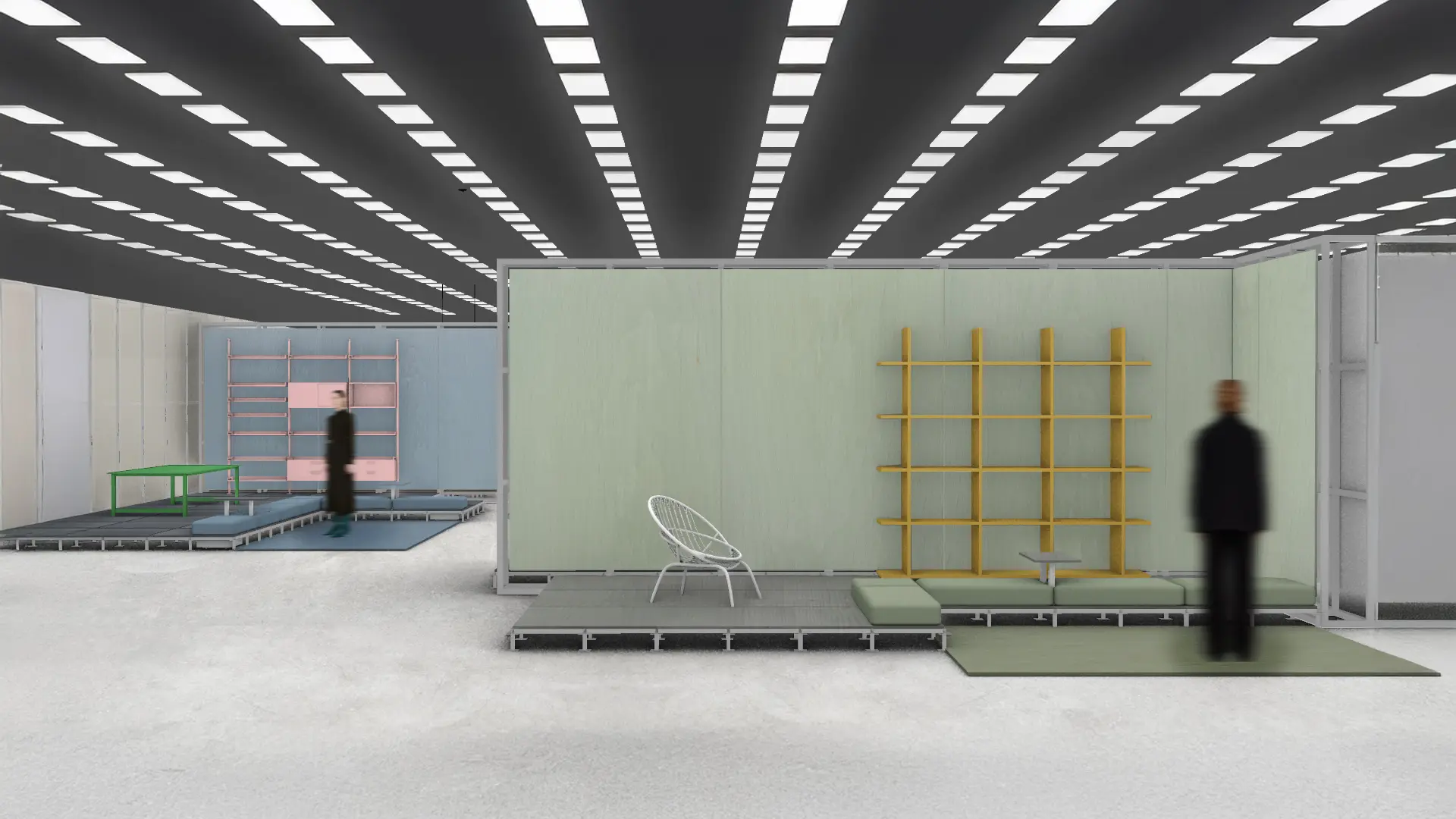Smart and sustainable purchases: how to make the most of the appliance bonus and how to apply. Requirements, amounts and limits to be aware of
Outside and inside the home. The outdoor novelties seen at the Salone del Mobile 2025
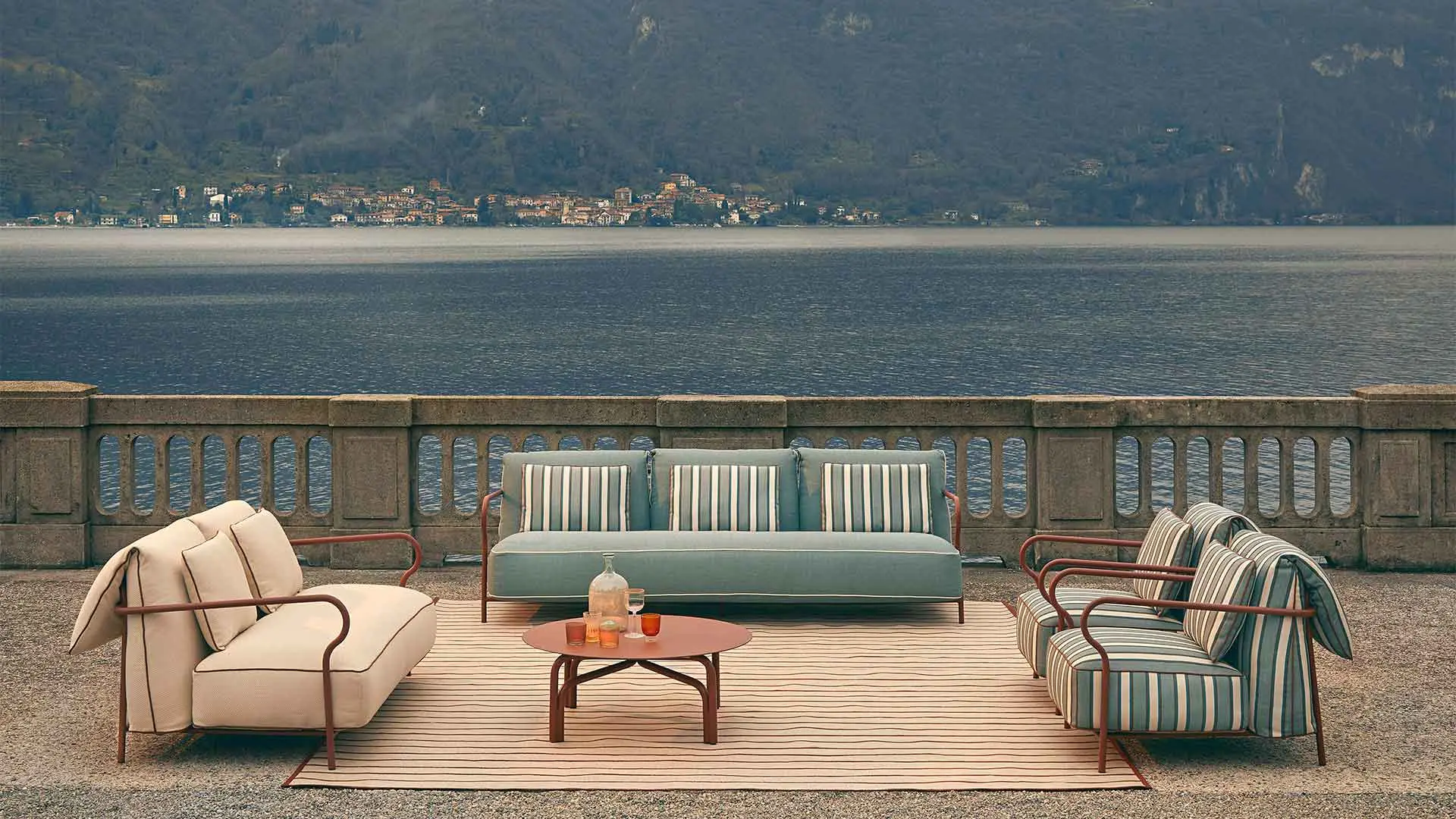
Unopiù, Salò, design Matteo Thun and Benedetto Fasciana - Ph. Mattia Aquila
Curved, enveloping lines, mute and earthen shades inspired by nature, geometries that never penalize comfort, even when they become more daring, imaginative variations on interlacing cords or fibers: these are the salient features of the outdoor offerings presented at the fair by companies in the sector. Here we tell you all about them
The boundaries between indoors and out, as has been apparent for some seasons now, are becoming increasingly blurred. In keeping with this trend, the outdoor furniture we saw at the last edition of the Salone del Mobile.Milano seems to have been borrowed from the living room or to complement it, with its discreet elegance based on soft, organic lines and a natural color palette ranging from beige to green and terracotta. Omnipresent, or almost, are details in cord and weaves, made by reinterpreting a technique as old as humanity with the help of modern industrial technologies.
Braided and coiled like sailors’ ropes, a new generation rope runs along the aluminum structure of Antigua, the new collection designed by Federica Biasi for Emu, softening it without concealing it from view. It features soft lines and generous dimensions, albeit in a minimalist style. This is a feature of the creations by this designer, born in 1989, who loves to proceed by subtraction rather than addition. The seats are designed to envelop those who use them like “a warm embrace on an autumn evening”.
Federica Biasi has also designed two new outdoor products for Gervasoni. The first, Mates, is the outdoor version of the Samet sofa and shares with it both the oriental inspiration, with matelassé detailing and stitching, and the modularity that enables endless compositions to be created by combining different forms and volumes. The second is a PVC-coated polyester yarn rug with a blue and white striped pattern. Its name, Saha, is a word present in several languages from Asia to the Mediterranean basin, always with a positive and auspicious meaning: in Sanskrit it means “land”, in Maltese “thank you”, while in Arabic it contains a wish for good health and happiness.
Reassuring forms and weaves are the strengths of the Wrap lounge armchair from Gloster, designed by its artistic director Henrik Pedersen. Its name already states its urge to envelop the body. The monobloc seat made from woven synthetic fibers rests on a very simple teak frame and embraces it so that it becomes almost one with it. The tone-on-tone cushions make the seat even more comfortable.
Mymi armchairs and tables designed by GamFratesi for Dedon also play with woven fiber. Eight years ago, with the Aiir series, the Italian-Danish duo consisting of Enrico Fratesi and Stine Gam had already deconstructed the classic plastic chair with a shell-shaped body by creating a “forest” (the term is apt since it was inspired by the birch forests of northern Europe) of vertical cracks in the shell. This time, the back of the chair and the base of the table welcome a handcrafted detail: interwoven fibers in different hues borrowed from the earth and nature.
It rests on two sculptural cylinders, and plays on the contrast between the softness of the lines and the visual density of the enameled top with subtle variations in color, the Insula table imagined by Patricia Uquiola for Kettal: a visually striking “island” that complements the collection of the same name formed by a modular sofa with a roller as a backrest and low tables.
Hos is the industrial reinterpretation of craft skills and the dialogue between a rigid material and a softer textile element. This is the new collection of limited edition pieces designed for GandiaBlasco by starchitect Kengo Kuma, presented in a stand designed on the same principle. Fabrics draped over simple wooden frames inspired by Japanese temples have a consistency and texture like carpets but are made from recycled PET fibers. The Spanish brand has also begun a collaboration with designer Nao Tamura, author of the collection Dunne, with soft forms recalling the undulations of sand dunes caressed by the wind.
The Salò collection by Matteo Thun and Benedetto Fasciana for Unopiù is inspired by lakeside atmospheres, especially on Lake Garda. The most eye-catching feature is the curved armrests of the armchairs and sofas, a sinuous and elegant line of colored aluminum (in the natural shades of terracotta, sage, graphite or sand) in continuity with the rest of the structure. Contrasting with its lightness are the large, ergonomic cushions.
Also with a strong personality, and a decidedly curvilinear appearance, is the modular seat-sculpture Twist from Plust Outdoor Attitude, designed by art directors Alberto Brogliato and Federico Traverso, a “curl” created by the extrusion of a square that bends forcefully to become an original graphic sign. Made of rotomolded polyethylene like the other pieces in the same family, a bench and a box, the seating is designed for contract and public spaces, where it can be used to create scenic installations, but can also fit easily into a domestic setting.
Versatility is the strong point of the Yak sofa from Midj, designed by Nicola Bonriposi and bearing the name of an animal known for its ability to survive in an extremely harsh environment. Just as the ruminant is at its ease on both the Tibetan plateau and the Italian Apennines, the sofa can easily switch from the living room to outdoor spaces, and will fit gracefully into any type of context. And apart from being adaptable, Yak is also practical, as it is completely screwless, with components that slot into place and can be easily dismantled.
Cabrio, the novelty launched at the fair by Extremis, also adapts to any climate, making it possible to enjoy the landscape and natural light even when the weather turns a little chillier. This two-seater cocoon-sofa has an enveloping form with a convertible cover. Designed by Dirk Wynants, the founder of the Belgian brand, it has two distinct sources of inspiration: the Strandkorb, the basket-shaped wicker deckchair widespread on the beaches of northern Germany since the nineteenth century, and convertible cars, symbols of luxury and leisure.
Vondom renews its collaboration with Jean-Marie Massaud, creating the Pasadena collection, based on a reinterpretation for outdoors (but not only) of the archetype of the modernist sofa with its sculptural presence and square forms softened by elegant curves. “My ambition was to create a product that spoke an architectural language and was generous in terms of comfort. I wanted to achieve the ideal balance between comfortable seating, sensuous profiles and simplicity of lines, which I believe is the key to timelessness,” explains the French designer.
In the same way, namely by reworking an existing furnishing guided by a contemporary outlook, the series of Seeds coffee tables and benches was designed by Cristina Celestino for Ethimo. We could describe the Friulian designer’s thinking as allusive in the best sense of the sense of the word, given the passion with which she creates a network of references to the past in her projects. Her starting point is the furnishings of greenhouses and plant nurseries, in particular the metal tables with raised edges, here revisited with refined materials such as natural teak and terracotta and combined in organic compositions.
The modular Itaca sofa, designed by Carlo Colombo for Talenti and presented for the first time at the Salone, takes its name from Ulysses’ mythological homeland, the safe harbour Homer’s hero wanted to return to at all costs to embrace his beloved Penelope once more, was presented for the very first time at the Salone. The upholstered pieces with Accoya wood frames (a term that does not refer to an exotic wood but to a technological process of acetylation of soft woods to boost performance and resistance) and rosewood can be arranged in a number of different configurations to create comfortable islands in the garden or any other outdoor space, by playing with shapes, heights, and colours.


 Exhibitions
Exhibitions
